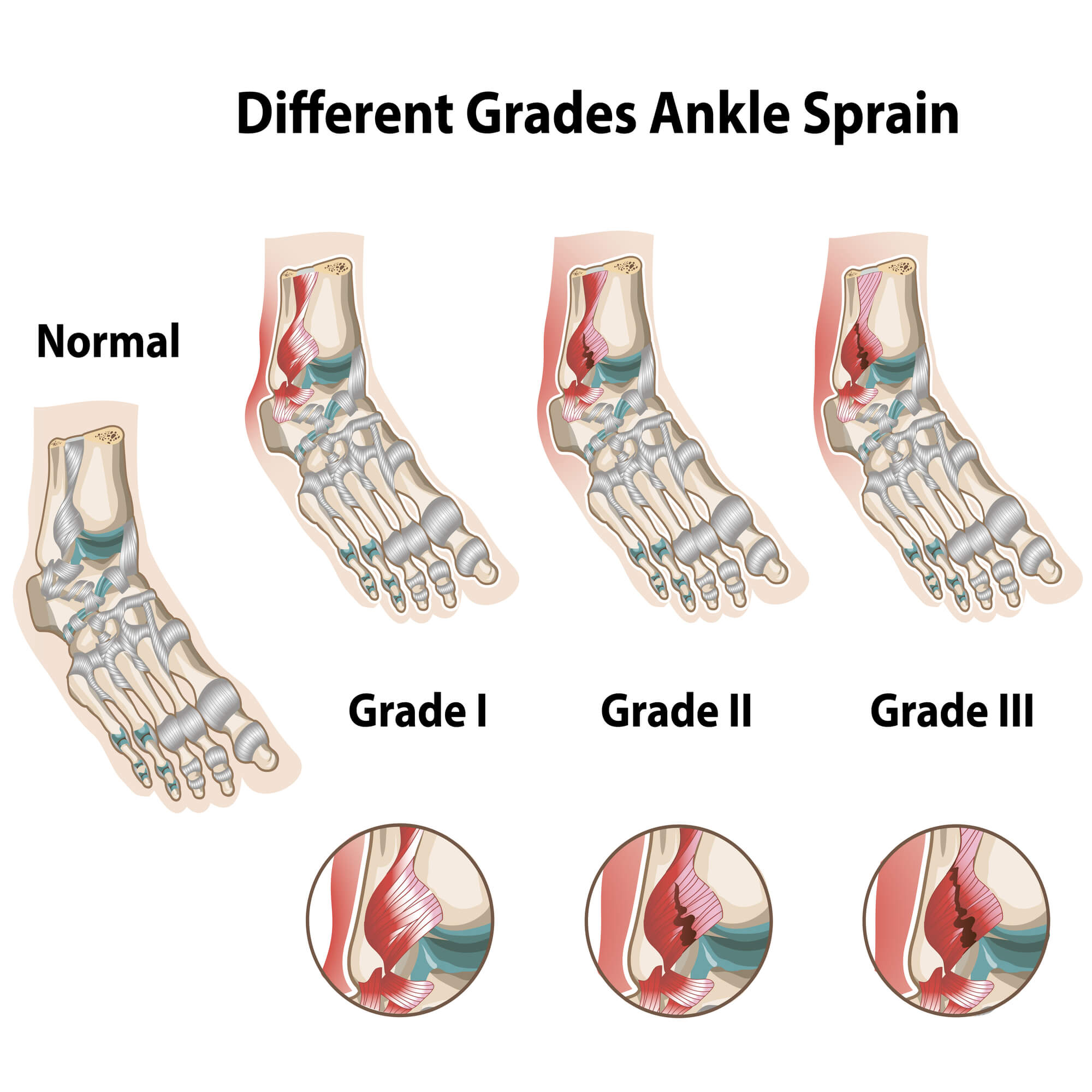Ankle Sprains: Different Types and Grades
Ankle sprains are a common injury, especially among athletes. A sprained ankle occurs when the ligaments that support the ankle are stretched or torn. It can cause pain, swelling, and instability in the affected joint. This article will delve into the different types and grades of ankle sprains and how to treat and prevent them properly.
What is an Ankle Sprain?
An ankle sprain is common when the ligaments that support the ankle are stretched or torn. This can happen when the foot and ankle twist or turn in an unnatural direction, often due to stepping on an uneven surface or experiencing a sudden impact.
The most common cause of an ankle sprain is a twist or turn of the foot and ankle in an unnatural direction. This can happen when you step on an uneven surface, such as a curb or a rock, or when you experience a sudden impact, such as a fall. Ankle sprains can also be caused by overuse or repetitive stress on the joint.

Types of Ankle Sprains
Inversion Sprain
An inversion sprain is the most common type of ankle sprain. It occurs when the foot and ankle twist inward, stretching or tearing the ligaments on the outside of the ankle. Inversion sprains are often caused by stepping on an uneven surface or experiencing a sudden impact.
Eversion Sprain
An eversion sprain is less common than an inversion sprain. It occurs when the foot and ankle twist outward, stretching or tearing the ligaments inside the ankle. Eversion sprains are often caused by a strong force applied to the outside of the ankle, such as when an athlete is tackled from the side.
High Ankle Sprain
A high ankle sprain is a more severe type involving the ligaments above the ankle joint. It is often caused by a strong force applied to the foot and ankle, such as when an athlete is tackled from the front. High ankle sprains can be more difficult to treat and may take longer to heal than other ankle sprains.

Grades of Ankle Sprains
Grade 1 Sprain
A grade 1 sprain is the mildest type of ankle sprain. It involves stretching or slightly tearing the ligaments, but the joint is still stable. Symptoms of a grade 1 sprain include mild pain, swelling, and bruising.
Grade 2 Sprain
A grade 2 sprain is a moderate ankle sprain. It involves a more significant tearing of the ligaments, causing instability in the joint. Symptoms of a grade 2 sprain include moderate pain, swelling, and bruising.
Grade 3 Sprain
A grade 3 sprain is the most severe type of ankle sprain. It involves a complete tear of the ligaments, causing significant instability in the joint. Symptoms of a grade 3 sprain include severe pain, swelling, and bruising.

Treatment and Rehabilitation
Initial Treatment
The initial treatment for an ankle sprain involves the RICE method: rest, ice, compression, and elevation. This can help to reduce swelling and pain in the affected joint. It is important to avoid putting weight on the injured ankle until the swelling goes down and the pain subsides.
Rehabilitation
Once the swelling and pain have subsided, it is important to begin rehabilitation to restore strength and range of motion to the injured ankle. A podiatrist or orthopedic doctor may recommend physical therapy or exercises to help strengthen the ankle and improve its stability. This may involve using a brace or tape to support the joint, stretches, and exercises to improve the range of motion.
Following the rehabilitation plan prescribed by your doctor or physical therapist is important to ensure a full and proper recovery. If an ankle sprain is not properly treated and rehabilitated, it can lead to chronic ankle instability and an increased risk of future injury.

Preventing Ankle Sprains
Wearing Proper Footwear
One of the most effective ways to prevent ankle sprains is to wear footwear that provides adequate support and cushioning for the foot and ankle. Shoes with good arch support and a sturdy sole can help to reduce the risk of ankle sprains, especially when participating in sports or physical activity.
Stretching and Strengthening Exercises
Incorporating stretching and strengthening exercises into your routine can help to improve the stability and strength of your ankles. This can include exercises such as calf raises and ankle rolls, as well as stretches like the downward dog or standing calf stretch.
Using Braces or Taping
Wearing a brace or taping the ankle can provide additional support and stability to the joint, reducing the risk of sprains. This is especially useful for individuals with chronic ankle instability or participating in high-impact activities.
Conclusion
Ankle sprains are common injuries that can range from mild to severe. Understanding the different types and grades of ankle sprains and how to treat and prevent them properly is crucial for maintaining the health and stability of your ankles. If you have experienced an ankle sprain, seeking medical attention and following a rehabilitation plan is important to ensure a full recovery.

